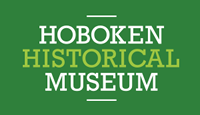Horticulture and Water Works
Though their fame is primarily the result of work in other areas, the Stevens’ contributions to American horticulture and water supply infrastructure are fascinating examples of their broad interests.
Colonel John Stevens had a keen interest in horticulture. Early after clearing the land at Hoboken, he planted many fruit trees that were new to the region. In 1797 he imported the first red camellia from England to America, and in 1798 he imported the first chrysanthemum in the country. The Elysian Fields were thoughtfully landscaped with an eye for beauty. Colonel Stevens took passionate interest in getting new seeds and the latest publications on plants, often exchanging specimens with other plant collectors. He even experimented with different fertilizers and greenhouses.
While John’s sons were not known for following his interest in plants, it is notable that Edwin, with the assistance of his brother Robert, invented a new kind of cast-iron plow. It was curved so that soil would not stick to it and was designed to be less weighty. The model sold well for years.
Colonel John’s interest in improving land and living conditions brought him into the Manhattan Company, which was formed to supply fresh water to the growing population of New York City. Water would flow from the company’s wells through mains made of pine logs then into buildings through lead pipes. John was the engineer responsible for laying the mains and connecting them to the wells. The system eventually supplied two thousand homes through twenty five miles of mains. John Stevens was also involved in the company’s work to pump water for fire fighting and street cleaning.

Sources
Archibald Douglas Turnbull, John Stevens, an American Record. Gardening, 144-146; Water Supply 147-149. Archive.org.
George Iles, Leading American Inventors. Curved plow, 25. Archive.org.
Jim Hans, 100 Hoboken Firsts. First Chrysanthemum, 4.
